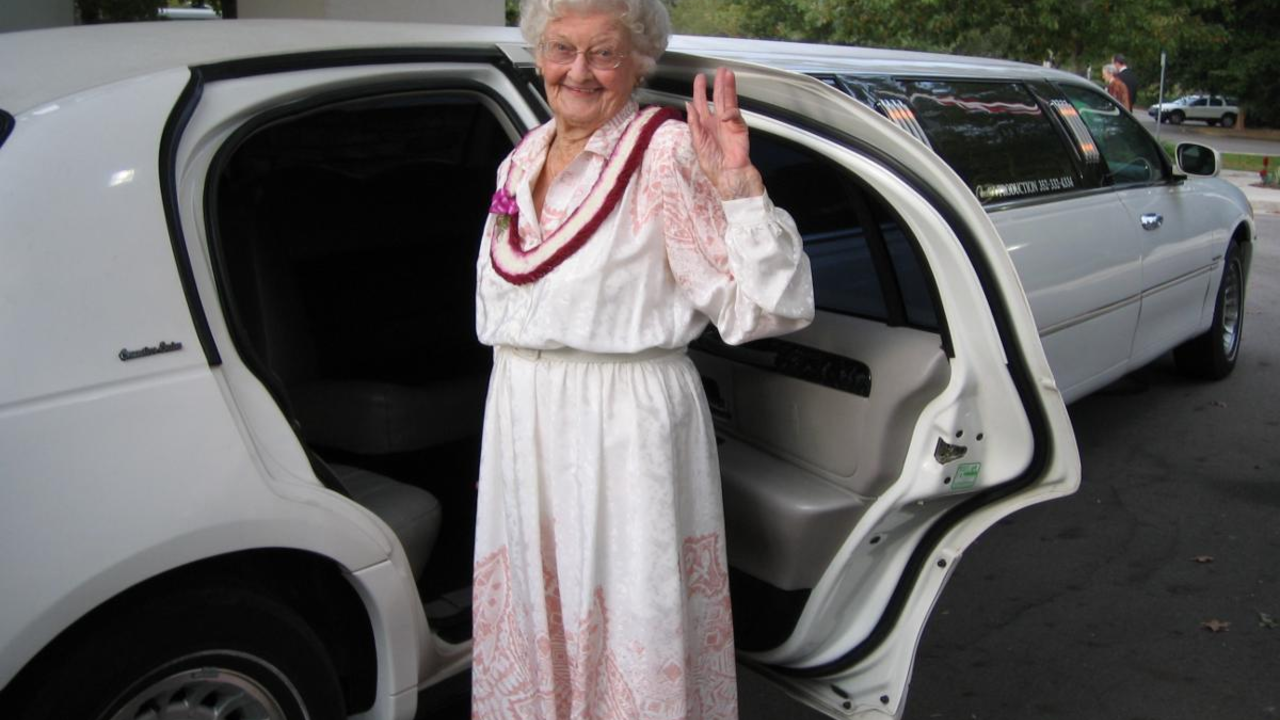Blog
What is "hospice" really?

Image Above: Acting Administrator of CMS Andy Slavitt and C-TAC Board Co-Chair Tom Koutsoumpas
Is hospice a commodity? Is it a payment system for the dying? Is it only for the final days of life? Is it only about giving morphine until a patient is no longer in pain?
Last week I attended the National Summit of the Coalition to Transform Advanced Care (C-TAC) in Washington DC. The speakers were Congressmen and Senators, health care leaders and insurers, pastors, and seriously ill people, and the Acting Administrator of Medicare/Medicaid and the Secretary of Veterans Affairs; all people interested in making the care that serves those in their final years of life as compassionate and creative as possible.
While the meeting had outstanding speakers, what struck me was that most of these dedicated, intelligent and caring people think that we need a "new model of care" for people with advanced illness and hospice was hardly mentioned. They described this model as one that includes not j...
My First Experience With Death

For most people, death is something that happens at the periphery of their lives – but some of us choose to make it the focus of our careers. I knew early on I wanted to care for the sick, but my path to caring for the dying was more circuitous.
As a kid I was given a book on how to take a pulse. I loved learning to feel the beat under the skin on my wrist. I asked for the “Visible Woman” for my 10th birthday and to my delight she was delivered, complete with the optional pregnancy parts. My path was set; after high school, I decided to get an AA degree and then transfer to University of Florida for my Bachelors Degree in Nursing.
My first real job as a RN was on a medical surgical floor in the local hospital where I had the responsibility of caring for patients following surgery. One of my patients was Mr. Green, who’d had surgery for lung cancer and was in and out of the hospital. In those days there was little to be done for people with cancer. They were put in a room at the en...
How Our Why Will Shape Our How

Generosity as Legacy

Image Above: Laure Carmichael at her 100th birthday party at Haven Hospice
Leland Kaiser said it well: “Great compassion and unconditional love can change the world; they are the only things that can”. I’d like to share with you the stories of two people whose donations of time, influence and money, along with great compassion and unconditional love, changed our community and left a legacy.
Retired bank teller Laura Carmichael had no children; widowed at 65, she was know for her legendary thank you notes, she clipped out the photos of brides in the newspaper and mailed them to the newlyweds, she drove the same Buick for nearly 20 years, and sent a crisp $1 dollar bill to every child chosen as “Student of the Month” at the local elementary schools. Generosity was in her bones.
Laura lived near the local hospital where she volunteered and was on their board of directors and on the hospice board where I was Executive Director. When we began talking about the need for a hospice house ...
9 Fund-Raising Strategies That Work

Do you see the future as one of shortage, lack, and ever-harsher governmental funding reductions? Or are you focused on an abundant future filled with new opportunities and innovative ways for people to engage and contribute? Let’s talk about how we can create that abundant future through development strategies that will enhance your organizations.
- Success draws success. People want to give to successful organizations. If they see your hospice is struggling and shrinking in size, significant donors are likely to turn away. Make sure they’re hearing your success stories - in the press, on your website, and on social media.
- Be great stewards. Not-for-profit hospice leaders must ensure their operation is efficient and financially sound.
- Make it easy to give. Offer a wide range of giving opportunities for donors, from memorial donations to in-kind donations of goods or services, grants or events. More stakeholders equals broader community support.
- Planned giving offers a tremendous a ...
5 Steps to Creating A Culture of Care

How can we in hospice management create a robust culture of care in our organizations? In the past I consulted with a hospice run by an autocratic leader who really didn’t want to know what the staff thought or cared about; his big concern was his bottom line, not his front lines. How is staff likely to respond to leadership solely focused on dollars and cents, even at the expense of their mission of care? Not well, in my experience, because it’s so at odds with the animating ideals of hospice itself, and of the people who go into this work.
That’s why it’s critical to create a corporate culture that supports our work and our people – and that culture begins with transparency and trust.
Here are 5 ways to improve your hospice’s culture of care, and better support your mission:
- Show them what’s under the hood. Share your view of the nuts and bolts of running a hospice with the staff, starting with how you budget. Helping staff to understand what things cost and what our expectati...
It Starts With Staffing

In hospice, your only product is service, and nothing is more important to that than proper staffing. No matter how powerful your mission statement is or how beautiful your facility, your people have to be service-oriented and fully committed to the work. Hospice doesn’t run on a nine-to-five, five-day week; it’s 24/7, and we can never be less than our best. We deal daily with the dying and the grieving, and that means that everyone, from the social worker to the nurses’ aide to the bookkeeper, has to be emotionally stable and mature enough to handle that.
What do you look for in a potential hire? My first priority in doing executive searches for clients today is the same as it was when I was hiring as an hospice Executive Director; I look for people who have a belief in something greater than themselves. I don’t mean religion necessarily, but faith in goodness, faith in humankind, faith in the rightness of the universe. People who are comfortable with themselves, who are curious...
10 Ways Your Hospice Can Stand Out From the Competition, Part II

How hospice has changed since the movement began! Back at the beginning, there was no competition, because there wasn’t any money. But today competition is fierce, and requires that we as leaders re-imagine and upgrade our relationships with our clients, our communities, our donors and our referrers. Beyond offering superb care, delivered consistently, and unfailingly going above and beyond what is expected, how can you stand out from other providers in your market?
Last time, I offered up the first five of these ten ways to thrive in an increasingly competitive market; here are five more.
1. Know what your community really wants. Often hospices offer programs they think are important but which may not really meet the needs of their community. Great organizations get to know intimately what their customers want. That means spending time talking with patients and families, not just sending out a survey.
2. Know what your referrers really want. Spend some time in physician off...
10 Ways Your Hospice Can Stand Out From the Competition, Part I

When hospice began, there was no competition between us because there was no money involved. But the last ten years has brought an explosion in hospice growth, and today many good hospices find themselves jostling for market share in an ever-more-crowded field.
Beyond offering superb care, delivered consistently, and unfailingly going above and beyond what is expected, how can you stand out from other providers in your market? My work with high-performing hospice organizations inspired me to pull together this list of what I see as the top ten differentiators; here are the first five.
1. Know how you’re different. Every hospice is required to provide basic things under the Medicare hospice benefit. What sets you apart? Key differentiators are the quality of care you provide, the responsiveness you show to patients and families, physicians, and referral sources, and commitment to your community.
2. Be timely and do it right the first time. Determine how long it takes from the refer...
Generosity and Healing

Image Above: Patti Moore leading a morning discussion for Hospice participants
Last week I had the opportunity to attend and participate in the 2016 Kaiser Philanthropy Innovation Institute in Phoenix, Arizona. A select group of representatives from not for profit healthcare systems, hospitals and hospice’s from across the country participated in the three day event where the healing power of Generosity was the lead topic of discussion. I’m very interested in refocusing on the impact philanthropy has to help hospices and palliative care organizations balance providing extraordinary care and innovations at the end of life with the steadily decreasing payments from the Medicare/Medicaid Hospice Benefit.
This year’s opening speaker was Sara Konrath, Director, Interdisciplinary Program for Empathy and Altruism Research at Indiana University a research lab with a primary focus on motivations, traits, and behaviors relevant to philanthropic giving, volunteering, and other pro-social beh...

